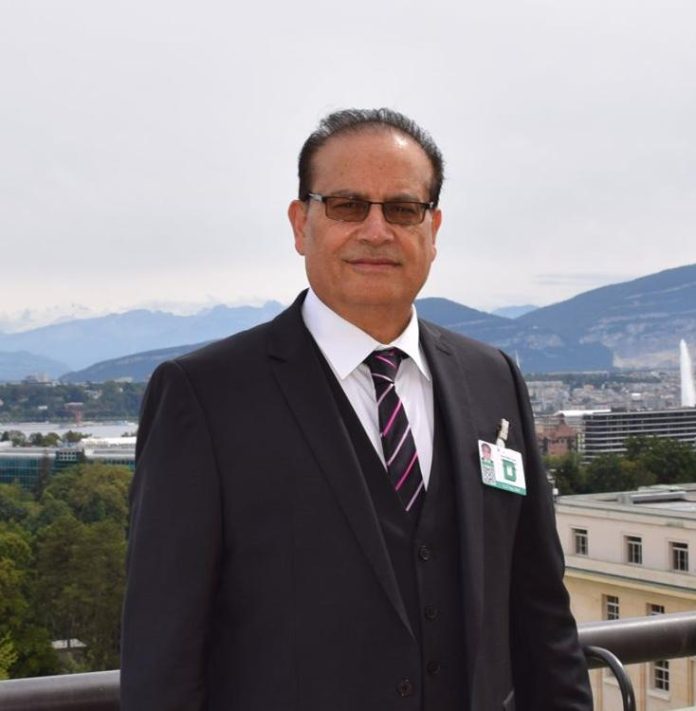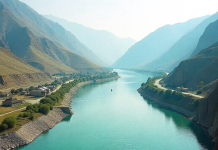By Qamar Bashir
What happens when a nuclear-armed country—surrounded by rivals, forged by decades of warfare, and positioned at the junction of South Asia, Central Asia, and the Middle East—decides not just to survive, but to dominate the battlefield? This is not fiction. This is the evolving reality of Pakistan’s military transformation—an extraordinary arc of resilience, innovation, and rising strategic relevance on the global stage.
How does a country build a combat doctrine not from textbooks, but from blood, pressure, and relentless engagement? Pakistan’s army has not only witnessed war—it has lived it continuously. Its training fields are battle zones. Its soldiers are veterans long before promotion. Pakistan’s first decisive test came during the Soviet invasion of Afghanistan in 1979. Despite limited resources, it played a central role in organizing, arming, and coordinating the Afghan resistance. Over time, that resistance—backed by Pakistan’s strategy—contributed to the breakup of the Soviet Union itself. Western analysts may debate the scale of influence, but no one denies the pivotal role played by Pakistan in one of history’s most significant Cold War victories.
When the United States launched its global War on Terror after 9/11, where did they turn? Again, Pakistan became the key player. Hosting logistics hubs, launching independent military operations, and working in tandem with NATO, Pakistan didn’t just participate—it led. One U.S. general bluntly admitted that Pakistan’s Operation Zarb-e-Azb eliminated terrorist networks with such efficiency that it created panic across the border in Afghanistan, where NATO had failed for over a decade to contain insurgents. What made Pakistan’s operations so effective? Was it merely terrain familiarity, or was it the fusion of human intelligence, drone strikes, and synchronized air-ground execution that set the new gold standard in counterterrorism?
Unlike many modern armies that have stretches of peacetime, the Pakistan Armed Forces have had no such luxury. From the mountains of Waziristan to the deserts of Balochistan, from the urban conflict zones of Karachi to the Line of Control in Kashmir, Pakistan’s soldiers have fought continuously—against terrorists, insurgents, and foreign incursions. Has this constant engagement weakened the force? Quite the opposite. It has produced what few nations can boast: a battle-hardened, tactically mature, and psychologically resilient military corps—trained not in simulation, but in sustained warfare.
What did Pakistan learn from two decades of partnership with U.S. and NATO forces? Beyond tactical know-how, it absorbed critical competencies in ISR (Intelligence, Surveillance, Reconnaissance), electronic warfare, encrypted communications, cyber defense, drone operations, and joint-force coordination. These were not mere workshops—they were shared operations, combat tested. Over time, this knowledge was indigenized, integrated into local doctrine, and reinforced through Pakistan’s own institutions. Could it be said, then, that Pakistan now operates at near-parity with mid-tier NATO forces in digital battlefield integration? All indicators suggest: yes.
What makes Pakistan’s weaponry unique in the South Asian equation? Not the number of tanks or fighter jets, but the sophistication of its systems and the strategic logic behind their deployment. The Shaheen missile series grants Pakistan extended-range strike capability. The Nasr missile—the crown jewel of tactical deterrence—can be deployed at the battlefield level with nuclear payloads, neutralizing India’s Cold Start doctrine. The Babur and Ra’ad cruise missile systems, featuring stealth and terrain-hugging trajectories, provide multi-platform delivery from land, air, and sea. Are these systems merely symbolic? Or do they signal Pakistan’s mastery of strategic ambiguity and layered deterrence?
Pakistan’s aerial strength has also seen remarkable evolution. The JF-17 Thunder, co-produced with China, now in its Block III configuration, comes equipped with AESA radar, BVR (beyond visual range) missile compatibility, and stealth features. Add to that the acquisition of China’s J-10C fighters, which are comparable in capability to Western 4.5-generation aircraft, and the equation tilts. Pakistan’s pilots, many trained through real combat sorties and joint exercises with China, Turkey, and even NATO members, have repeatedly demonstrated agility, adaptability, and lethality.
Is air superiority the only game-changer? Far from it. Pakistan’s air defense matrix—once minimal—now includes the HQ-9B long-range surface-to-air missile system, backed by radar jamming and electronic warfare components.
On the seas, Pakistan’s Navy, though traditionally underfunded, is undergoing a serious upgrade. New Type 054A/P frigates and Hangor-class submarines (nuclear-capable variants included) are redefining maritime deterrence and second-strike capability. For a country with a short coastline, is such an investment justifiable? When considering the geopolitical value of Gwadar Port and the Indian Ocean trade arteries, the answer becomes self-evident.
How deeply integrated is Pakistan’s defense network with global power structures? In a revealing interview in 2025, Indian Army General Rahul Singh admitted that India no longer faces Pakistan alone. During recent standoffs, he explained, Pakistan’s military command had real-time intelligence on nearly every Indian maneuver—timings, locations, deployments.
Singh went further, acknowledging that China not only exerted pressure along India’s northern border but also shared satellite intelligence with Pakistan. He described the battlespace as a “board game” in which Pakistan and China coordinated to destabilize India’s options. Does this confirm what I theorized —that any military plan against Pakistan must now factor in China as an active deterrent? General Singh’s words remove all doubt.
While traditional defense spending and direct arms imports matter, another layer of Pakistan’s rise lies beneath the surface: the silent power of dual-use civilian technology. Over the past two decades, Pakistan has legally imported photolithography machines, CNC tools, aerospace-grade processors, encrypted satellite modules, and thermal guidance components—mostly under industrial or medical licenses from countries like Germany, France, Switzerland, Spain, the UK, and the United States. Were these tools left idle in labs? Quite the contrary. They were reverse-engineered, adapted, militarized.
Through institutions like NESCOM, SUPARCO, ISPAE, and the Strategic Plans Division, Pakistan has used these components to design indigenous missile guidance systems, encrypted communications, AI-enabled drones, radar-detection platforms, and anti-jamming technology. How resilient is this supply chain? Because it is global, diversified, and rooted in civilian sectors, it is not easily disabled by sanctions or embargoes.
Can Pakistan claim independence in defense innovation? Not entirely—but its trajectory is toward autonomy. It now maintains joint development labs with China, drone collaboration with Turkey, and ISR and electronic warfare alignment with Russia. The fusion of East and West, of Cold War-era tactics and AI-age capabilities, places Pakistan in a rare position: capable of matching regional threats while disrupting global ones.
When India launched Operation Sindoor in 2025 to strike insurgent bases, Pakistan’s response was swift and strategically devastating. It reportedly downed multiple Indian aircraft—Rafales, Mirage 2000s, and SU-30MKIs—using J-10Cs equipped with PL-15 long-range missiles. Supported by Chinese AWACS and electromagnetic warfare units, Pakistan neutralized the attack with minimal losses. Were these exaggerated claims? Possibly. But independent imagery confirmed at least three Indian aircraft losses. For once, narrative control in the region tilted decisively toward Pakistan.
How does all this culminate? It leads to one unambiguous conclusion. The Pakistan military has transformed from a reactive, survivalist institution into a sophisticated, digitally integrated, battle-proven force—on land, at sea, in the skies, and now, increasingly, in cyberspace. It is no longer just a South Asian power—it is a strategic actor with global deterrence value.
Whether navigating the snow-covered peaks of Kashmir, the electromagnetic spectrum of digital war, or the economic chokepoints of the Arabian Sea, the Pakistan Armed Forces operate with clarity, maturity, and technological depth. They are not preparing for war—they are ready for it.
And for any adversary, the calculus has changed. Because when you contemplate war with Pakistan, you’re no longer facing a single nation. You are confronting a military-industrial matrix, battle-forged by history, reinforced by technology, and shielded by alliances. The message is unmistakable: Pakistan military is operating at the next level.
By Qamar Bashir
Press Secretary to the President (Rtd)
Former Press Minister, Embassy of Pakistan to France
Former MD, SRBC | Macomb, Michigan, USA

















